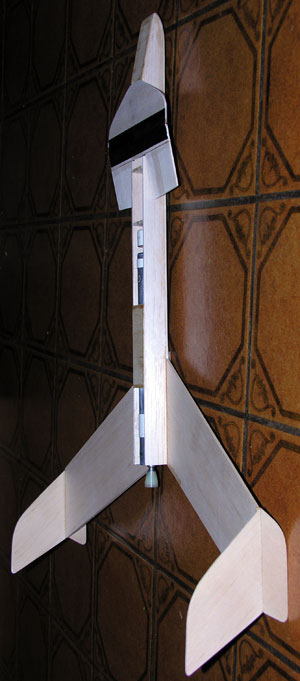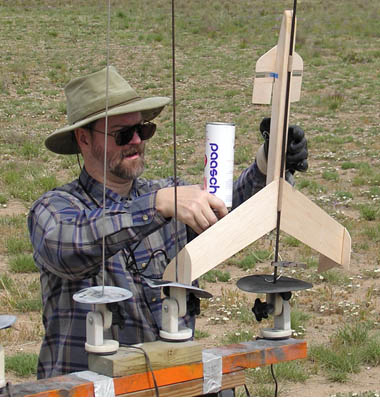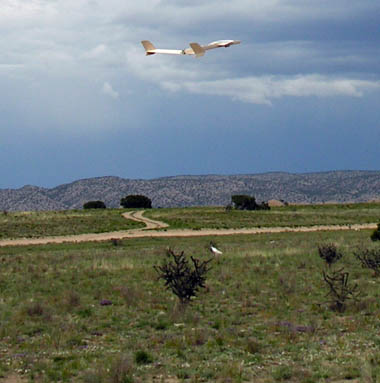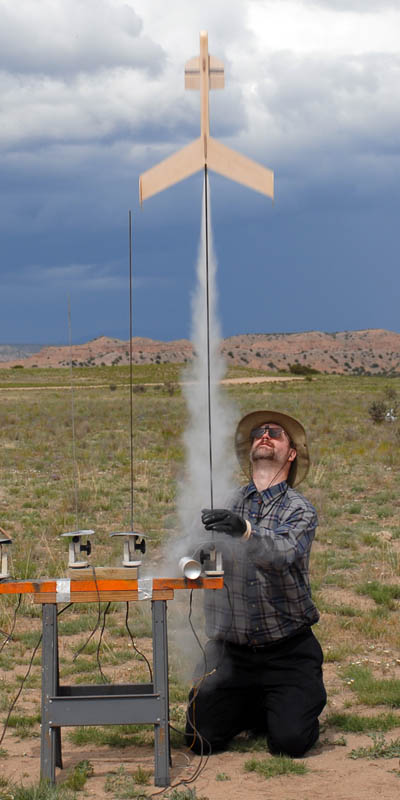Tom’s Vashon Rocketry Site
| Return to My Fleet |  |
Verdandi My Verdandi design is a cold power rocket glider — something which I'd never seen done before, so I had to give it a try. Vashon sold several "rocket plane" kits, such as the X-13, but these were "boost gliders" because they separated into more than one piece during flight. A "rocket glider" must stay in one piece throughout flight, bringing the motor casing back to the ground by glide recovery. This is not particularly easy with a Vashon motor because the motor casing is fairly heavy and therefore requires a relatively large wing area to glide it back safely. At the same time, a Vashon motor powered by R152a propellant is not able to lift a heavy rocket, so the weight must be kept down. For the Verdandi, I chose to scale up an existing rocket glider design with some minor modifications. The model is based on the Edmonds Aerospace Ecee glider. Rob Edmonds is one of the most interesting people in model rocketry, and I highly recommend his kits, which include some excellent beginner boost gliders. My Verdandi has some added dihedral, small bottom rudders, and a slightly different body shape from the Ecee, but it is basically a 50% scale-up of the Ecee. I also had to figure out how to activate the glide transition when flying with cold power (the Ecee uses the ejection charge of the model rocket motor to trigger transition). The Verdandi is built from 1/8-inch balsa (for the wings and fuselage bottom), 3/32-inch balsa (for the rudders, canard, and fuselage sides), and some 1/32-inch balsa (for the top sheeting of the fuselage). It is powered by a Vashon V-2 motor. During boost, the hinged rear part of the canard is allowed to move freely in the airflow, but at the transition to glide the rear part of the canard is locked down into position to pull the nose up and cause the model to glide. The glide transition is accomplished by a spring-loaded slide mechanism that is held in its rearward position by a length of CA-hardened ST-9 body tube that engages the V-2 motor's recovery separator. When the separator depressurizes after a short delay following the 'burnout' of the motor, the slide mechanism is released and moves forward, pushing against a lever arm mounted on the bottom of the rear part of the canard, locking it into glide position. The Verdandi weighs in at just under 100 grams with an unfueled V-2 motor installed. I left most of the fuselage top unsheeted to save weight (and because it was plenty strong as is). Perhaps I made the model a bit too large. In Norse mythology, Verdandi is one of the three norns (fates), along with Urd and Skuld. I wanted to name my glider after Verdandi mainly because I knew of her through the anime Ah! My Goddess, where she is known as Belldandy (pictured at the right). |
|
Below is a close-up view of the spring-loaded slide mechanism that actuates the transition to glide recovery.
Here is a top view of the Verdandi rocket glider. The motor is friction fit into the piece of ST-10 body tube near the bottom of the motor. The canard hinge is made from self-adhesive aluminized Mylar.
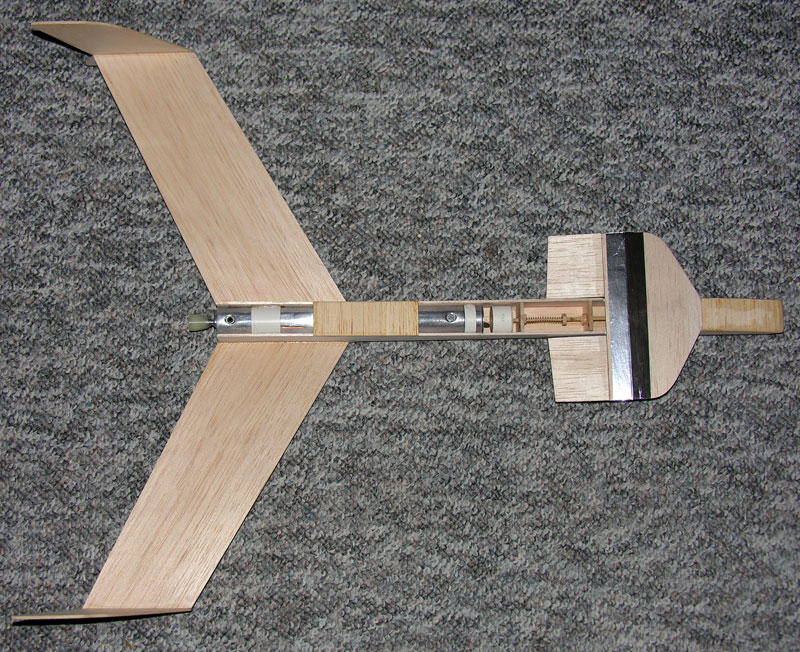
Verdandi was successfully flown at our May 2007 club launch, and she worked beautifully! I used zero time delay (three pierced timer disks) and you could hear the 'clack' immediately after burnout as the canards transitioned into glide mode. The glider continued rising in a big loop and settled into a glide, making a wide arc around the field before landing smoothly. Total flight time was just over 15 seconds. I had it trimmed a little on the stall side to be sure it wouldn't nose dive in, so I'll need to reduce the angle of the canards for future flights.
Special thanks to Mark Hamilton and Meghan Wilson for taking photos of the flight while I was busy flying the model. Note: This flight was also the first use of my through-the-nozzle fueling/firing assembly, because the V-2 motor used in this model has a rather leaky fueling valve.
Photos below by Mark Hamilton
|
Launch photo by Meghan Wilson
|
Page last updated April 17, 2008
